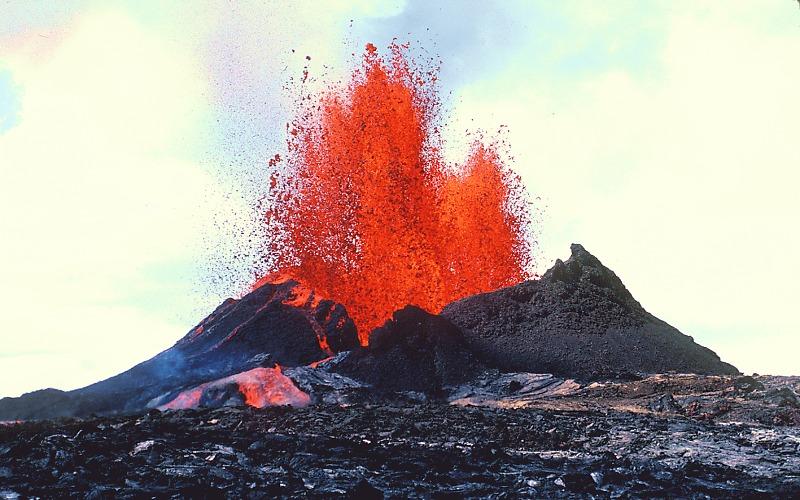Kilauea Volcano

Kilauea is the most active shield volcano in the Hawaiian Islands. The Kilauea volcano is between 300,000 and 600,000 years old and it emerged above sea level about 100,000 years ago. Its latest eruption occurred on May 17, 2018 at 4:17 AM. Its first documented eruption occurred in 1823. Most eruptions that were significant occurred at the summit or the eastern rift zone of the volcano. The volcano was created as the Pacific tectonic plate moved over the Hawaiian hotspot in the Earth's underlying mantle. Kilauea started as a submarine volcano which are underwater vents or fissures in the Earth's surface from which magma can erupt. It gradually built itself up through underwater eruptions of basalt lava. It finally emerged from the sea about 50,000 to 100,000 years ago. The nature of the volcano's eruptions have been a continual stream of eruptions in which lava steadily flows out the volcano onto the ground and also of eruptions where magma is violently fragmented and expelled rapidly from the volcano. This volcano has caused considerable property damage in the past. It includes the destruction of the town of Kapalana and the most recent caused in 2018 which was the destruction of Vacationland. The eruption along with an earthquake at 6.9 magnitude caused the evacuation of nearly 2000 residents of the nearby areas. During the eruption the volcano exploded throwing ash at a range of 30,000 feet into the air. Base on its continuous eruption cycle, experts predict that it will happen again in the near future.
No comments:
Post a Comment